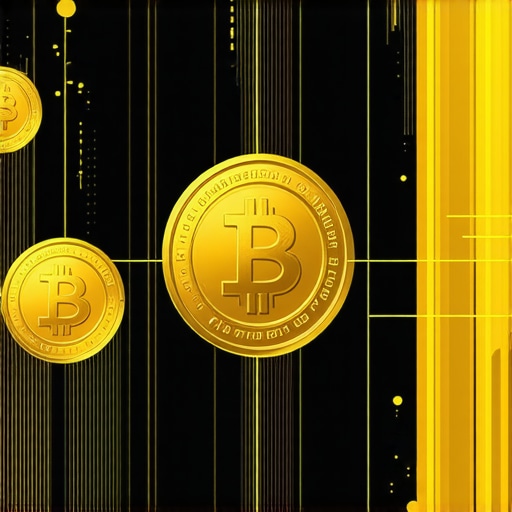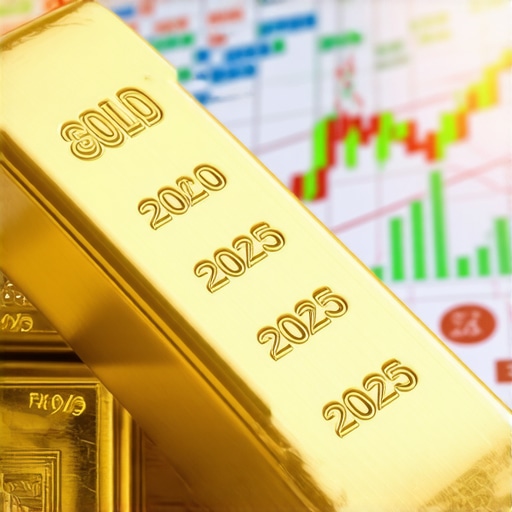Unveiling the Future of Gold: A Strategic Perspective on 2025 Market Dynamics
As we navigate the complex landscape of commodities, gold remains a quintessential asset class that embodies both safe-haven appeal and strategic investment potential. Understanding the nuanced demand drivers and emerging market trends for 2025 is crucial for investors, policymakers, and industry experts aiming to optimize their positions in this enduring asset. This comprehensive analysis synthesizes global economic indicators, geopolitical developments, and technological advances shaping gold’s trajectory.
Deciphering the Evolving Landscape of Gold Demand in 2025
What are the pivotal factors influencing gold demand in 2025?
The primary demand drivers include burgeoning jewelry markets in emerging economies, central bank gold acquisitions, and the expansion of gold-backed financial instruments such as ETFs and futures. According to a recent report by the World Gold Council, rising income levels and urbanization in countries like India and China significantly amplify jewelry consumption, bolstering physical demand. Simultaneously, central banks are expected to continue their cautious accumulation strategies, as outlined in this analysis.
Market Drivers and Future Price Trajectories in 2025
How will macroeconomic and geopolitical factors shape gold prices?
Global economic stability, inflationary pressures, and geopolitical tensions—particularly involving major economies—are pivotal in influencing gold’s safe-haven status. The potential for inflationary spikes, driven by expansive monetary policies and fiscal stimuli, underscores gold’s role as an effective hedge, as highlighted in recent market analysis. Furthermore, geopolitical conflicts in key regions may trigger short-term surges in demand, reinforcing gold’s portfolio diversification benefits.
Expert Insights into Strategic Gold Investments for 2025
What are the recommended investment strategies for navigating 2025’s volatile gold market?
Investors should consider a diversified approach, integrating physical gold holdings with sophisticated instruments like gold futures and ETFs. A disciplined, technical analysis-driven trading strategy, supported by current market signals, can maximize returns amid volatility. For instance, leveraging insights from gold futures technical analysis can provide a competitive edge. Moreover, building a long-term portfolio that balances gold with equities and alternative assets can optimize risk-adjusted performance.
Professional guidance and ongoing market research remain indispensable as we approach 2025, with industry experts emphasizing the importance of staying informed about shifts in demand patterns and regulatory changes. For a detailed overview of safe investment options, visit this safety guide.
Interested in expanding your knowledge? Explore expert content on best gold investment types in 2025 and stay ahead of market shifts.
Unlocking Advanced Gold Investment Strategies for 2025
As the gold market evolves amidst fluctuating global economic conditions, investors must adopt sophisticated strategies to capitalize on emerging opportunities. Moving beyond traditional holdings, understanding how to leverage derivatives, geopolitical signals, and technological tools can significantly enhance your portfolio’s resilience and growth potential in 2025.
Can Gold Derivatives Offer a Competitive Edge in 2025?
Gold futures and options are powerful instruments that allow traders to hedge risks or speculate on price movements. By analyzing technical patterns and market sentiment, investors can time their entries and exits more precisely. For example, expert analysis of gold futures technical analysis provides valuable insights into market momentum and volatility, enabling strategic positioning amid unpredictable swings.
How Do Geopolitical Developments Shape Gold’s Safe-Haven Appeal?
Geopolitical tensions, especially in regions like Eastern Europe or the South China Sea, can trigger short-term surges in gold demand. Investors should monitor international conflicts and diplomatic shifts, as outlined by this comprehensive analysis. Incorporating geopolitical risk assessments into your investment framework ensures you can respond swiftly to market disruptions and capitalize on safe-haven flows.
What Are the Role and Risks of Gold-Backed Digital Assets?
The rise of digital gold tokens and blockchain-backed gold assets introduces new dimensions to gold investing. These platforms promise liquidity, transparency, and ease of access, but also pose regulatory and security challenges. Evaluating the credibility and backing of such assets is crucial. Industry experts advise thorough due diligence, consulting resources like this guide on gold investment options for 2025.
Are you ready to refine your gold investment approach? Share your insights and experiences below, or explore more advanced strategies at this resource to stay ahead in 2025’s dynamic market environment.
Harnessing Technological Innovations to Optimize Gold Investment Portfolios in 2025
As we venture further into 2025, the integration of cutting-edge technology into gold investment strategies is no longer optional but essential. Advanced algorithms, machine learning models, and blockchain platforms are revolutionizing how investors analyze market data, execute trades, and ensure transparency. For instance, algorithmic trading systems powered by artificial intelligence can process vast datasets to identify subtle patterns and predict short-term price movements with unprecedented accuracy, giving savvy investors a competitive edge.
Blockchain technology also plays a pivotal role in enhancing the security and liquidity of digital gold assets. Decentralized platforms facilitate peer-to-peer transactions, reduce reliance on traditional banking infrastructure, and provide real-time auditability. Industry leaders like Paxos and Tether have demonstrated how tokenized gold can seamlessly integrate into diversified portfolios, offering liquidity and flexibility without sacrificing security.
The Nuanced Impact of Macro and Microeconomic Variables on Gold’s Future
While macroeconomic indicators such as inflation rates, interest rate policies, and currency fluctuations are well-known to influence gold prices, the nuanced interplay of microeconomic factors—like regional economic policies, commodity supply chain disruptions, and technological sector growth—must also be meticulously analyzed. For example, semiconductor shortages impacting electronics manufacturing can indirectly elevate gold’s appeal due to its role in high-precision technology components.
According to a recent detailed study by the International Monetary Fund (IMF), understanding these micro-level dynamics enables investors to anticipate short-term price fluctuations and position themselves accordingly. Furthermore, geopolitical stability in key regions directly affects supply chain reliability, impacting gold availability and pricing. Advanced scenario analysis and stress testing become invaluable tools, helping investors prepare for volatility stemming from these microeconomic shifts.
Deep Dive: How Do Central Bank Policies Shape Long-term Gold Trends?
What strategic insights can investors derive from central banks’ evolving policies?
Central bank policies are a cornerstone of gold market dynamics. As institutions like the Federal Reserve, European Central Bank, and People’s Bank of China recalibrate their monetary stances—whether through tapering asset purchases or adjusting interest rates—these moves send powerful signals about future liquidity and inflation expectations. For example, prolonged low-interest rates tend to diminish the opportunity cost of holding gold, thereby boosting its attractiveness.
Moreover, recent shifts toward quantitative easing and unconventional monetary policies have prompted central banks to diversify their reserves, often increasing gold holdings as a hedge against currency debasement. The World Gold Council reports that central bank gold acquisitions in 2024 surged to levels unseen since the 1970s, indicating a strategic move to safeguard against economic uncertainties.
Investors leveraging these insights should incorporate macroeconomic modeling and policy tracker tools—such as the IMF’s Global Financial Stability Report—to forecast central bank actions. This proactive approach enables the formulation of tactical entry and exit strategies, aligning investment timing with anticipated policy shifts.
The Future of Gold-backed Digital Assets: Risks and Rewards
As digital assets continue to evolve, their role in gold investment portfolios warrants close scrutiny. Gold-backed cryptocurrencies and tokenized assets promise enhanced liquidity and accessibility, but they also introduce regulatory ambiguities and cybersecurity risks. Experts emphasize thorough due diligence—examining the backing reserves, transaction transparency, and platform security—before committing capital.
Platforms like Digix and Goldfinch are pioneering transparency by employing blockchain to verify reserve holdings and transaction history. However, regulatory landscapes differ significantly across jurisdictions, and sudden policy changes can impact asset stability. Investors should stay informed through authoritative sources such as the Financial Stability Board (FSB) and consult legal experts to navigate this emerging frontier safely.
Interested in mastering the complexities of gold investment in 2025? Dive deeper into strategic analyses, technological innovations, and risk management techniques by exploring our expert-curated resources and case studies. Your proactive engagement today can position you as a leader in the evolving gold market landscape.
Harnessing Microeconomic Signals to Fine-Tune Gold Portfolios in 2025
While macroeconomic indicators such as inflation and interest rates dominate the discourse, the subtle influence of microeconomic variables—ranging from regional policy shifts to supply chain disruptions—demands sophisticated analysis. For instance, recent semiconductor shortages have underscored how technological sector constraints can elevate gold’s role in high-precision applications, thereby impacting market behavior. Investors equipped with granular data and scenario analysis tools can anticipate short-term fluctuations and make agile adjustments to their holdings.
Integrating Blockchain and AI for Real-Time Market Intelligence
The convergence of blockchain technology and artificial intelligence heralds a new era of transparency and predictive accuracy in gold investing. Blockchain platforms facilitate immutable records of reserve backing and transaction histories, fostering investor confidence. Simultaneously, AI-driven analytics leverage vast datasets—ranging from geopolitical news to macroeconomic releases—to forecast market movements with unprecedented precision. Combining these technological advances enables a proactive, data-driven investment approach.

Decoding Central Bank Policy Shifts Through Advanced Modelling
Central banks’ evolving policies—such as asset purchase tapering and interest rate adjustments—form the backbone of long-term gold price trends. Employing advanced macroeconomic modeling, informed by tools like the IMF’s Global Financial Stability Report, allows investors to interpret policy signals with greater nuance. For example, the recent surge in gold reserves held by the People’s Bank of China signals a strategic hedge against currency devaluation, offering tactical entry points for astute investors.
Emerging Digital Assets: Balancing Innovation with Risk Management
The proliferation of digital gold tokens and blockchain-backed assets introduces new opportunities but also complex risks. Transparency mechanisms, such as those employed by Digix and Goldfinch, enhance trust, yet regulatory uncertainties persist across jurisdictions. Conducting meticulous due diligence—examining reserve backing, platform security, and legal compliance—is essential. Industry experts recommend staying engaged with authoritative sources like the Financial Stability Board to navigate this evolving landscape confidently.
Leveraging Quantitative Analysis for Market Edge in 2025
Quantitative techniques, including algorithmic trading and statistical arbitrage, are increasingly vital in the gold market’s competitive arena. Sophisticated models analyze minute market signals—such as order book dynamics and sentiment indices—to optimize timing and sizing of trades. Investors who incorporate these tools alongside fundamental insights can capitalize on fleeting opportunities, minimizing risk and maximizing returns in volatile conditions.
Strategic Response to Microeconomic and Geopolitical Shifts
Monitoring regional economic policies, technological disruptions, and diplomatic tensions enables a dynamic response to emerging risks and opportunities. For example, geopolitical conflicts in resource-rich regions can constrict supply chains, elevating gold’s strategic value. Deploying scenario analysis and stress testing enhances preparedness, allowing investors to swiftly adapt their strategies in response to unexpected market shocks.
Engage with Cutting-Edge Research to Stay Ahead
Staying at the forefront of gold market innovation requires continuous education. Resources such as the IMF’s detailed microeconomic analyses and blockchain security protocols provide critical insights. By integrating these knowledge streams into your strategic framework, you position yourself as a market leader capable of navigating the complexities of 2025’s gold landscape.
Expert Insights & Advanced Considerations
1. Leverage Microeconomic Data for Precision Timing
Advanced investors utilize granular regional and sector-specific data to anticipate short-term price movements, such as supply chain disruptions in technology components affecting gold demand in high-tech industries.
2. Integrate Blockchain and AI for Real-Time Decision Making
The combination of blockchain transparency and AI predictive analytics offers a competitive edge, enabling investors to execute trades based on immutable data and sophisticated market forecasts.
3. Monitor Central Bank Policy Shifts with Macro Modeling
Employ macroeconomic models, including tools like the IMF’s reports, to interpret central bank actions—such as gold reserve adjustments—and align investment strategies accordingly.
4. Explore Digital Gold Assets with Caution
While digital tokens backed by gold provide liquidity and access, rigorous due diligence on reserve backing, platform security, and regulatory compliance is essential to mitigate risks associated with this emerging asset class.
5. Utilize Quantitative Techniques for Market Edge
Incorporate algorithmic trading, sentiment analysis, and statistical arbitrage to identify fleeting opportunities and optimize trade timing amid volatile market conditions.
Curated Expert Resources
- World Gold Council: The leading authority on gold demand and supply trends; provides comprehensive, data-driven insights essential for strategic planning.
- IMF Microeconomic Analysis Reports: Offers in-depth macro and microeconomic analysis, helping investors interpret policy shifts and economic indicators affecting gold markets.
- Blockchain Security Protocols by Paxos and Goldfinch: Industry leaders setting standards for transparency, security, and reserve verification in digital gold assets.
- Financial Stability Board (FSB): Provides regulatory updates and frameworks crucial for navigating the evolving landscape of digital and traditional gold investments.
- Market Analytics Platforms like Bloomberg and Reuters: Offer real-time data, technical analysis tools, and sentiment indicators for informed decision-making.
Final Expert Perspective
Mastering the nuances of the 2025 gold market involves integrating microeconomic insights, leveraging technological innovations, and maintaining vigilance regarding policy shifts. As gold continues to serve as a critical hedge against macroeconomic uncertainties, sophisticated analysis and resourceful strategies are indispensable for professionals seeking to optimize their portfolios. Engaging with authoritative sources and embracing cutting-edge tools will position you at the forefront of this dynamic landscape. We invite industry experts and serious investors to share insights, contribute their expertise, and explore in-depth resources to deepen their understanding of gold’s evolving role in global finance.










